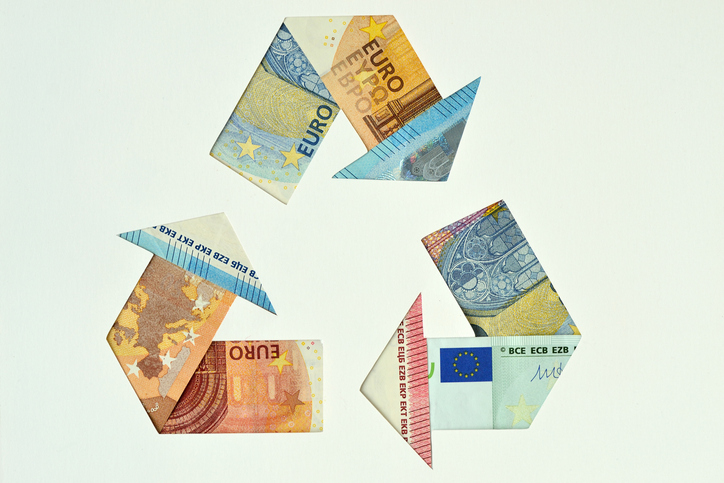
©CalypsoArt/iStock/Getty Images Plus
Current ESG goals have tended to be set by reference to existing performance — for example, reducing solid waste or freshwater withdrawn measured against a recent internal baseline (a notable exception to this approach would be science-based targets regarding greenhouse gas emissions). That incremental approach has had value, as it has allowed companies to get used to the iterative practice of target setting, monitoring and ambition-raising around relevant ESG topics. However, such progress does not tell us whether a business is performing in a manner that is actually “sustainable” against an objective standard.
The EU’s taxonomy may help build out this missing context. Many US companies are going to get familiar with the structure and implications of the EU taxonomy; those entities that are scoped into full reporting under the Corporate Sustainability Reporting Directive (CSRD) will find themselves reporting on the EU taxonomy, in addition to the applicable set of European Sustainability Reporting Standards (ESRS).
The first time many US companies engage with it, the taxonomy may appear novel and onerous, especially when layered on to the extensive disclosure requirements of the ESRS. However, over time the taxonomy is likely to become a powerful source of market signals and strategy credentials, particularly around decarbonization, and is expected to be extensively used by institutional investors in their allocation strategies. The taxonomy and its required disclosure place a company’s economic activity in context, undermining greenwashing and providing robust comparability. This is in addition to a supportive public policy environment, such as the EU’s response to the Inflation Reduction Act.
Green. Who says?
You might ask, who gets to say whether an activity is sustainable or not? In short, the EU does — setting up the notion of “green by law.” The taxonomy is part of an ambitious scope of sustainability-focused policy initiatives within the EU, including fiduciary duty, value chains, targeted carbon taxes, green labels and several others.
In this light, we can think about the taxonomy as a way of categorizing the economic activities of companies as sustainable or not sustainable by asking two questions in sequence:
First, are the types of products and services a company provides capable of contributing to specific sustainability objectives? Second, does the company provide those products and services in a way that is actually sustainable?
These two questions can be distilled into the following concepts regarding a company’s activities under the taxonomy: Are they eligible, and are they aligned?
In short, a company will work to map its economic activities against the taxonomy’s relevant sector criteria (eligibility). It will then analyze those eligible activities for alignment against the taxonomy; that second limb involves a set of screening criteria and assessment of harms and safeguards. That analysis results in a set of comparable KPIs regarding the percentage of a company’s revenue, operating expenses (opex) and capital expenses (capex) that comes from, or is related to, sustainable activities judged against the EU’s largely science-based taxonomy criteria.
What we’ve learned so far
This all may sound somewhat abstract, but the process and result of assessing your entity against the taxonomy will likely be deeply integrated into your business through both the sustainability and finance functions. Many companies may choose (and be expected) to highlight their taxonomy performance as part of their investor relations strategy.
There is a full year of some taxonomy reporting (at this stage, limited to certain categories of large and listed EU companies) that demonstrates the taxonomy’s complexities, impacts and potential. The EY EU Taxonomy Barometer indicates that many companies have taken a conservative approach to assessing eligibility under the taxonomy. Nonetheless, across sectors and geographies, a significant proportion of economic activity in the EU can be assessed for eligibility under the taxonomy. As practice develops, the proportion of activity assessed as eligible is likely to creep upward.
Institutional investors have started to identify taxonomy disclosures as a rich source of comparable forward signals. For example, today a company may have a low proportion of its revenues assessed as sustainable (in low single figures), but it may show a capex figure a quarter of which is assessed as sustainable (i.e., in alignment with the applicable taxonomy criteria for that activity). That gap between alignment of revenues and alignment of capex may provide a strong signal about the future direction of a company’s business model, namely, that the volume of sustainable capex over time will redirect a company’s core activities toward generating sustainable future revenues. Some companies that provide products directly connected to sustainable activities (e.g., wind turbine manufacturers) may discover that 100% of their revenues are already assessed as sustainable.
For many sectors closely connected to the transition to a low-carbon economy, taxonomy disclosures can help identify the intended speed of a company’s transition. These disclosures may also expose ambitious-sounding plans as in fact being much closer to business as usual dressed up for public relations. We have seen several companies expand their reporting beyond the initial requirements of the taxonomy regulation to provide a clear picture for their institutional investors and help attract the vast volumes of funds flowing into sustainability-linked investment products.
The only constant is change
As with any new regulation that contains novel and complex elements, reporting against the taxonomy will evolve over time. The volume of data available to the market for analysis will grow exponentially as more companies report on the full taxonomy and more companies are scoped in through CSRD as the EU expands the suite of taxonomy disclosures. As part of placing sustainability information on the same footing as financial information, taxonomy disclosures, alongside other CSRD disclosures, will also be subject to assurance.
Given the complex implications of preparing for taxonomy reporting and how such disclosures may be interpreted by the capital markets, US companies should closely monitor the EU taxonomy as part of the flow of work to get ready for CSRD reporting.
Brian Tomlinson is EY Americas Managing Director of Environmental, Social and Governance.